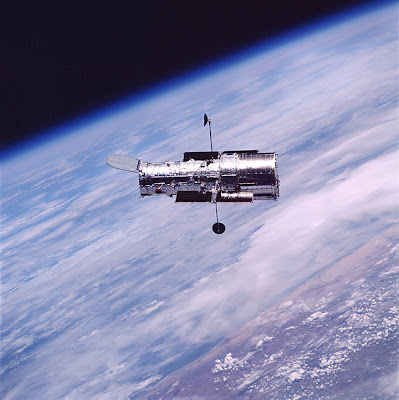Hubble completes millionth observation

Since its launch in 1990, the Hubble Space Telescope (HST) has revolutionised the science of astronomy and the business of space-themed wallpapers. On Monday, 4 July 2011, it reached a new milestone: While searching for water in an exoplanet’s atmosphere, it made its one millionth science observation.
“For 21 years Hubble has been the premier space science observatory, astounding us with deeply beautiful imagery and enabling ground-breaking science across a wide spectrum of astronomical disciplines,” said NASA Administrator Charles Bolden, who piloted the space shuttle mission that carried Hubble to orbit 21 years ago.
The millionth observation was a spectroscopic analysis of the faint light coming from exoplanet HAT-P-7b, which is larger than Jupiter and orbit a star much hotter than our own Sun. Spectroscopic analysis is a means of identifying the chemical composition of a gas by observing which specific wavelengths of light are absorbed by that gas.
“We are looking for the spectral signature of water vapor. This is an extremely precise observation and it will take months of analysis before we have an answer,” said Drake Deming of the University of Maryland and NASA’s Goddard Space Flight Center. “Hubble demonstrated it is ideally suited for characterizing the atmospheres of exoplanets, and we are excited to see what this latest targeted world will reveal.”
Sadly, with the grounding of the Space Shuttle fleet, there is no longer any way for astronauts to visit and service the HST. It remains to be seen how many more breakthroughs can be made, and milestones reached, before it finally fails and needs to be decommissioned.
